- Sorry, this product is unavailable.
-
 A 22,000 ton whaling ship steams into a broken plain of white, glimmering ice during the howling fury of an Antarctic gale. Aboard is Duncan Craig, who gave up his clerking job in London to move to South Africa. A promised job turned out to be a dead end; but he is then offered a short contract aboard the whaler. But crew on other ships in the whaling fleet are fighting amongst themselves and the fleet commander, who had a stormy relationship with the boss's son, has vanished under mysterious circumstances. What madness drives the ship forwards, deeper and deeper into the ice until its jagged edges hold her fast? Marooned amidst the pitiless, frozen wastes, the crew of the Southern Cross make a desperate attempt to survive against the odds.
A 22,000 ton whaling ship steams into a broken plain of white, glimmering ice during the howling fury of an Antarctic gale. Aboard is Duncan Craig, who gave up his clerking job in London to move to South Africa. A promised job turned out to be a dead end; but he is then offered a short contract aboard the whaler. But crew on other ships in the whaling fleet are fighting amongst themselves and the fleet commander, who had a stormy relationship with the boss's son, has vanished under mysterious circumstances. What madness drives the ship forwards, deeper and deeper into the ice until its jagged edges hold her fast? Marooned amidst the pitiless, frozen wastes, the crew of the Southern Cross make a desperate attempt to survive against the odds. -

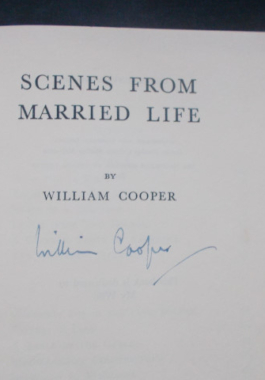 The subject here is a very rare one in novels - a happy marriage. Joe, a young man who in 1939 was sleeping with his girl but avoiding marrying her, is now in 1949 (and not so young) is still unmarried and his knowing friends have written him off as a permanent bachelor. Has he missed the boat? A third of the way into the book he triumphantly catches it, with a lovely school teacher called Elspeth. His most knowing friend, a lady psychologist says: 'It's easier to get married, than to be married.' Joe is now a temporary civil servant and a novelist, in the London of men's clubs, government offices and suburban houses but his career problem - like his non-siderish temperament - persists. Will he manage to keep his job and get his next small masterpiece published? A story written with comic incidents and serious purpose. https://rsliterature.org/fellow/william-cooper/
The subject here is a very rare one in novels - a happy marriage. Joe, a young man who in 1939 was sleeping with his girl but avoiding marrying her, is now in 1949 (and not so young) is still unmarried and his knowing friends have written him off as a permanent bachelor. Has he missed the boat? A third of the way into the book he triumphantly catches it, with a lovely school teacher called Elspeth. His most knowing friend, a lady psychologist says: 'It's easier to get married, than to be married.' Joe is now a temporary civil servant and a novelist, in the London of men's clubs, government offices and suburban houses but his career problem - like his non-siderish temperament - persists. Will he manage to keep his job and get his next small masterpiece published? A story written with comic incidents and serious purpose. https://rsliterature.org/fellow/william-cooper/ -
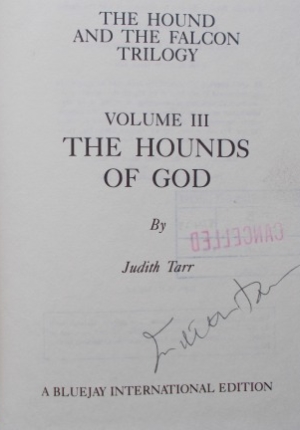
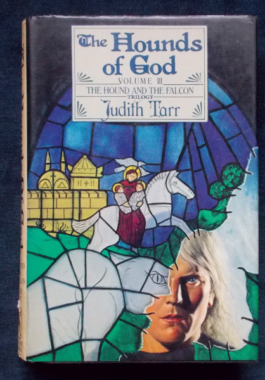 Book III of The Hound And The Falcon. In the magical kingdom of Rhiyana, peace reigns under the Elvenking. But terrible forces are stirring in the world beyond. Alfred, the Elven priest has settled down at last amongst his own people, as Lord Chancellor of Rhiyana. But old enemies will not let Alfred savor his new life, and he must prepare for the ultimate battle of wills against an evil whose power is even greater than his own...The Hounds of God, the heretic-hunters and inquisitors of the Church of Rome, have come hunting. Their prey: the king and his immortal people. And their greatest weapon may be one of the king’s own kin. Cover art by Kevin Eugene Johnson.
Book III of The Hound And The Falcon. In the magical kingdom of Rhiyana, peace reigns under the Elvenking. But terrible forces are stirring in the world beyond. Alfred, the Elven priest has settled down at last amongst his own people, as Lord Chancellor of Rhiyana. But old enemies will not let Alfred savor his new life, and he must prepare for the ultimate battle of wills against an evil whose power is even greater than his own...The Hounds of God, the heretic-hunters and inquisitors of the Church of Rome, have come hunting. Their prey: the king and his immortal people. And their greatest weapon may be one of the king’s own kin. Cover art by Kevin Eugene Johnson. -
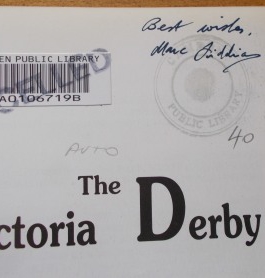
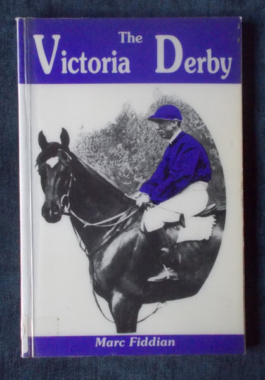 Older than the Melbourne Cup, the Derby is restricted to three year olds and run at set weights. Here is the history of the Derby, with a roll call of famous horses, both winners and also-rans and the effect that this race has had on so many careers. With black and white photographs.
Older than the Melbourne Cup, the Derby is restricted to three year olds and run at set weights. Here is the history of the Derby, with a roll call of famous horses, both winners and also-rans and the effect that this race has had on so many careers. With black and white photographs. -

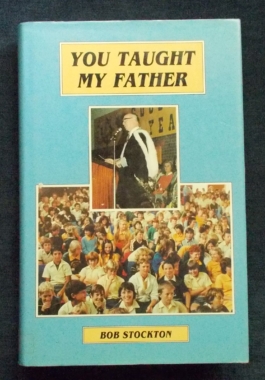 Stockton served overseas for three years with the RAAF and during this time completed his degree by correspondence. He has taught at Narrandera and Wauchope High Schools and was Deputy Principal at Cowra and Springwood High Schools. In 1976 he also became the first principal at the new high school at Cambridge Park and saw it grow from an initial enrolment of 246 students to be the third largest secondary school in the Sydney area. In his story he experiences the discomforts and frustrations as well as the funny side of teaching and the adventure of such a career. This book is from a limited printing of only 1000.
Stockton served overseas for three years with the RAAF and during this time completed his degree by correspondence. He has taught at Narrandera and Wauchope High Schools and was Deputy Principal at Cowra and Springwood High Schools. In 1976 he also became the first principal at the new high school at Cambridge Park and saw it grow from an initial enrolment of 246 students to be the third largest secondary school in the Sydney area. In his story he experiences the discomforts and frustrations as well as the funny side of teaching and the adventure of such a career. This book is from a limited printing of only 1000. -
 Edward Francis "Eddie" Charlton, AM (31 October 1929 – 8 November 2004) was an Australian professional snooker and English billiards player. He won the Australian Professional Championship numerous times, was the Pot Black Champion three times and winner of the Kronenbrau 1308 Classic and the Limosin International. He will be remembered fondly by Australians as 'Steady Eddie' and his appearances on the BBC-TV programme Pot Black.
Edward Francis "Eddie" Charlton, AM (31 October 1929 – 8 November 2004) was an Australian professional snooker and English billiards player. He won the Australian Professional Championship numerous times, was the Pot Black Champion three times and winner of the Kronenbrau 1308 Classic and the Limosin International. He will be remembered fondly by Australians as 'Steady Eddie' and his appearances on the BBC-TV programme Pot Black. -

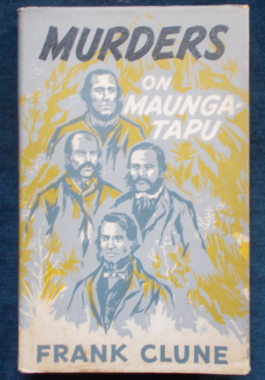 Armed robbery, murder, lies, treachery, 'confession' and legal tangle that ended in a sensational trial, followed by three executions - all the ingredients of a callous crime committed on the New Zealand goldfields in 1866. A gang of brutal Londoners - Richard Burgess, Tom Noon (Noonan), Joseph Sullivan and Phil Levy waylaid five gold-laden prospectors on a lonely track on Maungatapu ('Sacred Mountain'), killed them and hid the bodies before going on a spree. The prospectors were missed, and suspicion fell on the four. Hoping for a free pardon, Sullivan 'dobbed' on his mates and Burgess wrote a confession but implicated Sullivan. Clune traces the lives of the four and shows the influences played such an important role in shaping their twisted lives - the overcrowded Thames-side slums created by the Industrial Revolution, the laws that punished rather than reformed, the rotting prison hulks, the transportation system and the mental cruelty in the prisons of the day.
Armed robbery, murder, lies, treachery, 'confession' and legal tangle that ended in a sensational trial, followed by three executions - all the ingredients of a callous crime committed on the New Zealand goldfields in 1866. A gang of brutal Londoners - Richard Burgess, Tom Noon (Noonan), Joseph Sullivan and Phil Levy waylaid five gold-laden prospectors on a lonely track on Maungatapu ('Sacred Mountain'), killed them and hid the bodies before going on a spree. The prospectors were missed, and suspicion fell on the four. Hoping for a free pardon, Sullivan 'dobbed' on his mates and Burgess wrote a confession but implicated Sullivan. Clune traces the lives of the four and shows the influences played such an important role in shaping their twisted lives - the overcrowded Thames-side slums created by the Industrial Revolution, the laws that punished rather than reformed, the rotting prison hulks, the transportation system and the mental cruelty in the prisons of the day. -

 In the mid-1840s a thirteen-year-old British cabin boy, Gemmy Fairley, is cast ashore in the far north of Australia and taken in by aborigines. Sixteen years later he steps out of the bush and inadvertently confronts the new white settlers, hopeful yet terrified, staking out their small patch of home in an alien place. To them, Gemmy stands as a different kind of challenge: he is a force that at once fascinates and repels. His own identity in this new world is as unsettling to him as the knowledge he brings to others of the indigenous people who cared for him.
In the mid-1840s a thirteen-year-old British cabin boy, Gemmy Fairley, is cast ashore in the far north of Australia and taken in by aborigines. Sixteen years later he steps out of the bush and inadvertently confronts the new white settlers, hopeful yet terrified, staking out their small patch of home in an alien place. To them, Gemmy stands as a different kind of challenge: he is a force that at once fascinates and repels. His own identity in this new world is as unsettling to him as the knowledge he brings to others of the indigenous people who cared for him. -

 For 2000 years, since it pierced the side of Christ, the Spear of Destiny has been invested with amazing occult power. This is the legend and its continuing fulfillment through the decline of the Roman Empire, the Dark Ages and into the twentieth century. It tells the story of the chain of men who possessed the Spear, from Herod the Great to Adolf Hitler and how they sought to change the face of history by wielding its occult powers for good or evil. The Spear of Destiny is identified as the Spear of the Holy Grail mentioned in the sagas of the Dark Ages and shows the Grail to be a uniquely Western path to mind expansion. For the first time the Satanic occult development and faculties of Adolf Hitler are described in authentic and documented detail, demonstrating how he furthered his aims and his conquest of the world by black magic practices. The final chapters describe a Manichean battle of worlds behind the changing scene of modern times. With black and white photographs.
For 2000 years, since it pierced the side of Christ, the Spear of Destiny has been invested with amazing occult power. This is the legend and its continuing fulfillment through the decline of the Roman Empire, the Dark Ages and into the twentieth century. It tells the story of the chain of men who possessed the Spear, from Herod the Great to Adolf Hitler and how they sought to change the face of history by wielding its occult powers for good or evil. The Spear of Destiny is identified as the Spear of the Holy Grail mentioned in the sagas of the Dark Ages and shows the Grail to be a uniquely Western path to mind expansion. For the first time the Satanic occult development and faculties of Adolf Hitler are described in authentic and documented detail, demonstrating how he furthered his aims and his conquest of the world by black magic practices. The final chapters describe a Manichean battle of worlds behind the changing scene of modern times. With black and white photographs. -
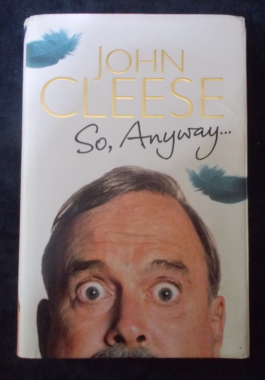
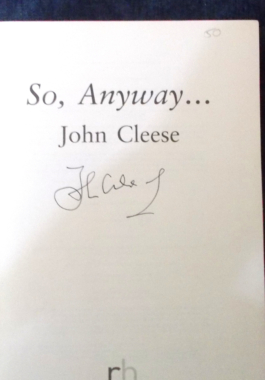
So, Anyway…..John Cleese
$50.00So, anyway...how did a tall, shy youth from Weston-super-Mare become a self-confessed legend? These things happen. And en route, John Cleese describes his nerve-racking first public appearance at St Peter’s Preparatory School at the age of eight and five-sixths; his endlessly peripatetic home life with parents who seemed incapable of staying in any house for longer than six months; his first experiences in the world of work as a teacher who knew nothing about the subjects he was expected to teach; his hamster-owning days at Cambridge; and his first encounter with the man who would be his writing partner for over two decades, Graham Chapman. And so on to his dizzying ascent via scriptwriting for Peter Sellers, David Frost, Marty Feldman and others to the heights of Monty Python. Punctuated from time to time with John Cleese’s thoughts on topics as diverse as the nature of comedy, the relative merits of cricket and waterskiing, and the importance of knowing the dates of all the kings and queens of England, this is a masterly performance by a former schoolmaster. With fabulous black and white photographs. -
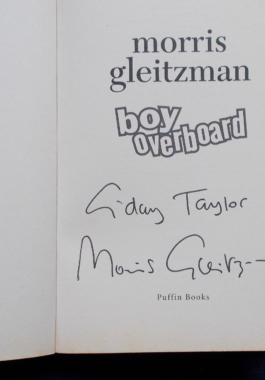 Jamal and Bibi have a dream - to lead Australia to soccer glory in the next World Cup. But first they must face landmines, pirates, storms and assassins. Can Jamal and his family survive their incredible journey and get to Australia? Sometimes - to save the people you love - you just have to go overboard.
Jamal and Bibi have a dream - to lead Australia to soccer glory in the next World Cup. But first they must face landmines, pirates, storms and assassins. Can Jamal and his family survive their incredible journey and get to Australia? Sometimes - to save the people you love - you just have to go overboard. -
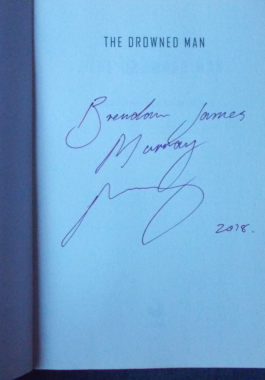
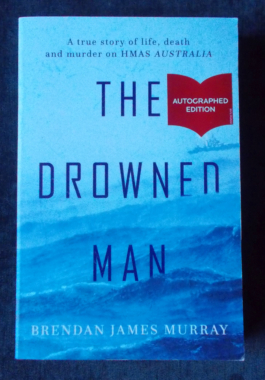 A chance encounter in a fish-’n’-chip shop set Brendan James Murray on the trail of a mystery. Had a gay man been secretly murdered on H.M.A.S Australia during the Second World War? The veteran he spoke to was certain. ‘I knew about it,’ he said. ‘We all did.’ But was the story true? If so, who was the dead man? And why was it so hard to find out? This book is the search for the answer, almost stone-walled by cover-up and silence. In the end, it brings us to the lies that have shrouded our understanding of war, and especially of war at sea. As one of the survivors poignantly says, ‘I want to pass it on to the next generation. What it was like. What it was really like.’
A chance encounter in a fish-’n’-chip shop set Brendan James Murray on the trail of a mystery. Had a gay man been secretly murdered on H.M.A.S Australia during the Second World War? The veteran he spoke to was certain. ‘I knew about it,’ he said. ‘We all did.’ But was the story true? If so, who was the dead man? And why was it so hard to find out? This book is the search for the answer, almost stone-walled by cover-up and silence. In the end, it brings us to the lies that have shrouded our understanding of war, and especially of war at sea. As one of the survivors poignantly says, ‘I want to pass it on to the next generation. What it was like. What it was really like.’ -

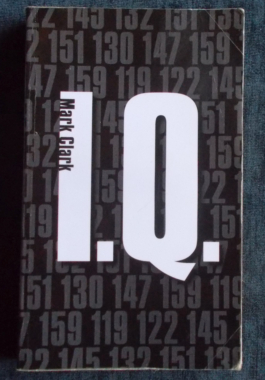
I.Q.: Mark Clark
$60.00Book I of I.Q.: The Trilogy. In a future world,m where people can buy and sell I.Q.,two men set out on a quest to find out who they really are. This is the story of a 100, who never gambled; a 160 who has been reformatted and a I.Q. 1000 president who controls their world. -
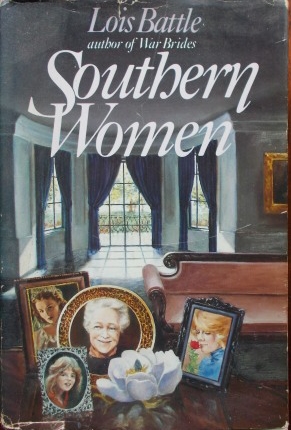

Southern Women: Lois Battle
$60.00Eunnonia: tough, widowed, loyal and at 83, still a pillar of Savannah society, the matriarch still guiding her brood. Lucille: Nonnie's youngest and prettiest daughter, now an aging Southern belle, ever hungry for male adoration, yet whose secret resentments and unfulfilled yearnings threaten to destroy her charmed life. Cordy: Lucille's restless daughter who had accepted the standards of womanhood with which she was raised; then at 30, and now a mother, she faces a cheating husband she must leave, a career she must build, a self she must find - but will she find it at home, in Savannah? This is not only a story about the bonds of family; it is a story of the struggle for personal freedom; of rebellion and tradition; of reality versus the myths of gentility, kinship, allegiances and love; and the modern issues of marriage, sex and love clashing with the Southern society image of ladies and family. -
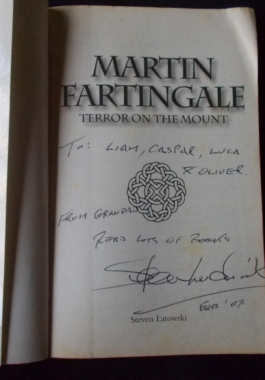
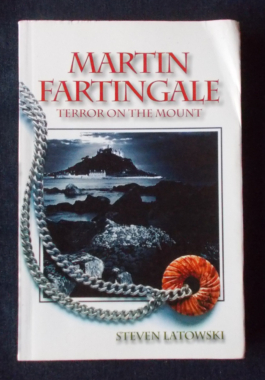 Martin Fartingale hates English weather, hates Cornwall and most of all, hates his name. He is staying with his mother and batty grandmother in a small fishing village over looking St. Cecils Mount, an intriguing rocky blob at the end of a causeway out to sea. Ignoring the warnings of his new school friends Danny and Charlotte (Charlie) that no-one has ever escaped from St. Cecils Mount, Mart5in decides to break into the ancient building and explore. He finds himself face to face with Gregor, the Mad Monk, Ursula, a black witch - and he must defeat Sir Bullimore Fergus in sword fighting and the Black Knight in a joust, with unexpected allies the ghost of Uncle Septimus Fartingale (who appears as a foul-smelling green vapour) and a white witch who looks remarkably like Charlie.
Martin Fartingale hates English weather, hates Cornwall and most of all, hates his name. He is staying with his mother and batty grandmother in a small fishing village over looking St. Cecils Mount, an intriguing rocky blob at the end of a causeway out to sea. Ignoring the warnings of his new school friends Danny and Charlotte (Charlie) that no-one has ever escaped from St. Cecils Mount, Mart5in decides to break into the ancient building and explore. He finds himself face to face with Gregor, the Mad Monk, Ursula, a black witch - and he must defeat Sir Bullimore Fergus in sword fighting and the Black Knight in a joust, with unexpected allies the ghost of Uncle Septimus Fartingale (who appears as a foul-smelling green vapour) and a white witch who looks remarkably like Charlie. -
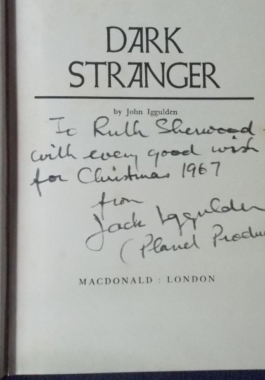

Dark Stranger: John Iggulden
$80.00James Duncan and Peter Jirapon, brought together by the search for a missing witness in a rape and murder case, they are totally opposite in age, temperament and race. Duncan is a cynical, high flying publicity man in his middle fifties; Jirapon is a young, intense, idealistic Aboriginal lawyer. In the course of the search they are swept out to sea in an open boat of the coast of Northern Australia and must find a comradeship in order to survive. -

 Australian actor and comedian Slim DeGrey (1918 - 2007), known for his roles in They're A Weird Mob, You Can't See Around Corners and many other Australian film and T.V. productions was a member of the A.I.F. Prisoners' Concert Party in the infamous Changi Gaol. There was a funny side; not often and not always, but hilarious and absurd incidents did occur and together with the infamous style of Australian dry humour, helped sustain morale and relieve the drab lives of the P.O.Ws. Littered with fabulous Australianisms and droll sketches, Slim DeGrey definitely found Changi's funny side.
Australian actor and comedian Slim DeGrey (1918 - 2007), known for his roles in They're A Weird Mob, You Can't See Around Corners and many other Australian film and T.V. productions was a member of the A.I.F. Prisoners' Concert Party in the infamous Changi Gaol. There was a funny side; not often and not always, but hilarious and absurd incidents did occur and together with the infamous style of Australian dry humour, helped sustain morale and relieve the drab lives of the P.O.Ws. Littered with fabulous Australianisms and droll sketches, Slim DeGrey definitely found Changi's funny side. -

 Explosive and controversial, Waterfront exposes, for the first time, the real story behind the bitter 1998 war on the wharves which divided Australians and changed the nature of the workplace forever. This shocking exposè reveals who was behind it and what it means for all Australians. It all began with a 'deep throat' phone call to John Coombs, the head of Australia's most militant union, the Maritime Union of Australia. The mystery caller warned him of a clandestine plot to destroy the union's hold on the waterfront. The controversial stand-off between the Patrick Stevedoring company and the Maritime Union became a battle for the hearts and minds of the average Australian. Veteran Sydney Morning Herald journalists Trinca and Davies covered the waterfront dispute from the very beginning and take us behind the headlines to tell the real story of this real-life political thriller. Illustrated with black and white photographs. A very scarce, autographed first printing; a derogatory reference to Peter Costello caused this issue to be recalled and pulped.
Explosive and controversial, Waterfront exposes, for the first time, the real story behind the bitter 1998 war on the wharves which divided Australians and changed the nature of the workplace forever. This shocking exposè reveals who was behind it and what it means for all Australians. It all began with a 'deep throat' phone call to John Coombs, the head of Australia's most militant union, the Maritime Union of Australia. The mystery caller warned him of a clandestine plot to destroy the union's hold on the waterfront. The controversial stand-off between the Patrick Stevedoring company and the Maritime Union became a battle for the hearts and minds of the average Australian. Veteran Sydney Morning Herald journalists Trinca and Davies covered the waterfront dispute from the very beginning and take us behind the headlines to tell the real story of this real-life political thriller. Illustrated with black and white photographs. A very scarce, autographed first printing; a derogatory reference to Peter Costello caused this issue to be recalled and pulped. -

 Book IV of The Great South Land Saga. The beautiful valley was lonely and remote and lovely Tilly Martin longed to leave it. Only the presence of Everitt Oliver, his flattering words and dark good looks, eased her restless heart. And she intended to have him - on her own terms. But another woman, as wild and untamed as the land, passionately longed for him too. Before their destinies were decided, the valley would know murder, madness, and disgrace...a young girl born to ill-repute would get a new chance at life...and a proud settler would be humbled by the man he despised.
Book IV of The Great South Land Saga. The beautiful valley was lonely and remote and lovely Tilly Martin longed to leave it. Only the presence of Everitt Oliver, his flattering words and dark good looks, eased her restless heart. And she intended to have him - on her own terms. But another woman, as wild and untamed as the land, passionately longed for him too. Before their destinies were decided, the valley would know murder, madness, and disgrace...a young girl born to ill-repute would get a new chance at life...and a proud settler would be humbled by the man he despised. -
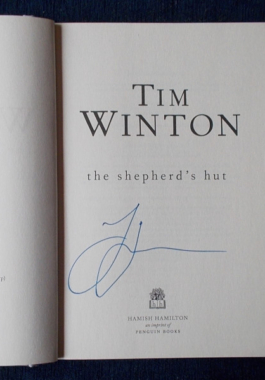
 Jaxie Clackton dreads going home. His mum's dead, his old man bashes him mercilessly and he wishes he was an orphan. Then in one terrible moment his life is stripped to what he can carry and ow he can keep himself alive. There's just one person in the world who would understand hi and what he still dares to dream for. But to reach her he has to cross the vast saltlands on a trek that only a dreamer or a fugitive would dare to attempt.
Jaxie Clackton dreads going home. His mum's dead, his old man bashes him mercilessly and he wishes he was an orphan. Then in one terrible moment his life is stripped to what he can carry and ow he can keep himself alive. There's just one person in the world who would understand hi and what he still dares to dream for. But to reach her he has to cross the vast saltlands on a trek that only a dreamer or a fugitive would dare to attempt. -

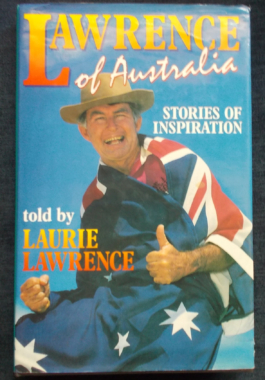 Laurie Lawrence is a remarkable Australian - a maker of champions, capable of lifting the spirits of those around him to soaring heights. As a swim coach possessing the gift of inspiration he is without peer, and his line-up of champions - Steve Holland, Tracey Wickham, Jon Sieben, Duncan Armstrong, Julie McDonald - bears gold medal testimony to his qualities. But Laurie Lawrence is very many other things too - extrovert, patriot, poet, humorist, singer and, in the 1990s, the most sought-after motivational speaker in Australia. Lawrence of Australia captures the essence of the man through 24 remarkable stories of sport and its champions. In these deeply personal, funny and very often inspiring tales, Lawrence uncovers profound secrets of success which translate to all walks of life. It is a book for everyone - entertaining, revealing and vastly uplifting.
Laurie Lawrence is a remarkable Australian - a maker of champions, capable of lifting the spirits of those around him to soaring heights. As a swim coach possessing the gift of inspiration he is without peer, and his line-up of champions - Steve Holland, Tracey Wickham, Jon Sieben, Duncan Armstrong, Julie McDonald - bears gold medal testimony to his qualities. But Laurie Lawrence is very many other things too - extrovert, patriot, poet, humorist, singer and, in the 1990s, the most sought-after motivational speaker in Australia. Lawrence of Australia captures the essence of the man through 24 remarkable stories of sport and its champions. In these deeply personal, funny and very often inspiring tales, Lawrence uncovers profound secrets of success which translate to all walks of life. It is a book for everyone - entertaining, revealing and vastly uplifting. -


"Shane O'Donnell" was born to almost total deafness, yet he grew up to play an important part in the development of the Ord River Dam area and in conserving the natural life of that fascinating environment. The "O'Donnell" family are real. Their names were changed for the publication of this book. This is a case history of how to do the best for profoundly deaf children but more, it is a story of a fight against the odds - and winning.
-
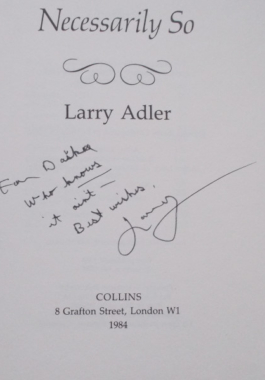 Larry Adler raised the mouth-organ from children's toy and music-hall turn to big time film and show business. He appeared alongside Eddie Cantor, Fred Astaire, George Gershwin; he played at special performances for President Roosevelt, the King of Sweden and the Prince of Wales. He toured with Jack Benny and Ingrid Bergman during the war. Then came McCarthyism and the destruction of his career. He moved to England and continued into journalism, and was nominated for an Oscar for his film score of Genevieve. Billie Holliday once remarked of his talent: "Man, you don't play that f***ing thing, you SING it!" Autographed by Larry Adler.
Larry Adler raised the mouth-organ from children's toy and music-hall turn to big time film and show business. He appeared alongside Eddie Cantor, Fred Astaire, George Gershwin; he played at special performances for President Roosevelt, the King of Sweden and the Prince of Wales. He toured with Jack Benny and Ingrid Bergman during the war. Then came McCarthyism and the destruction of his career. He moved to England and continued into journalism, and was nominated for an Oscar for his film score of Genevieve. Billie Holliday once remarked of his talent: "Man, you don't play that f***ing thing, you SING it!" Autographed by Larry Adler. -

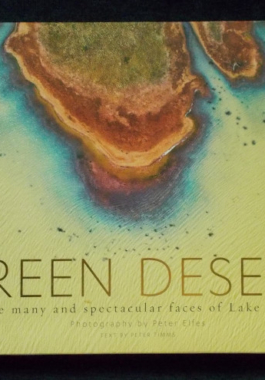 Lake Eyre, at Australia's centre, is a paradox: both hostile and inviting, by turns a pitiless salt plain and a riot of colour and pattern. Its beauty, mystery and astonishing variety are captured here by photographer Peter Elfes who has been travelling to the Lake Eyre region, documenting the people, the landscape, the floods, the animals and wildlife. His spectacular images re-define landscape photography, taking it into the realm of art. Where others have only found an unchanging Australian desert, Peter's lens reveals the spectrum of colours, the dramas and infinite changes which countless artists and writers have sought to explain. With accompanying text by renowned author and critic Peter Timms, this is Australia as few have seen it: a strange and intoxicating land which occasionally becomes a green desert.
Lake Eyre, at Australia's centre, is a paradox: both hostile and inviting, by turns a pitiless salt plain and a riot of colour and pattern. Its beauty, mystery and astonishing variety are captured here by photographer Peter Elfes who has been travelling to the Lake Eyre region, documenting the people, the landscape, the floods, the animals and wildlife. His spectacular images re-define landscape photography, taking it into the realm of art. Where others have only found an unchanging Australian desert, Peter's lens reveals the spectrum of colours, the dramas and infinite changes which countless artists and writers have sought to explain. With accompanying text by renowned author and critic Peter Timms, this is Australia as few have seen it: a strange and intoxicating land which occasionally becomes a green desert. -
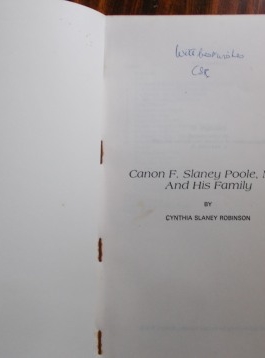
 Frederic Slaney Poole (1845-1936), son of Judge Thomas Slaney Poole, stepped off the St. Vincent at Port Adelaide on November 30, 1867 to work at the Poonindie Native Institution, was priested in 1869, and became incumbent of Robe, a vast parish. Before becoming headmaster Christ Church Grammar School, Mount Gambier, he travelled to London and married Rebecca Scott. In 1874 be became incumbent of St John's, Halifax Street, Adelaide. Tall, thin, bearded and a keen sportsman, Poole was a popular preacher, fearless in denouncing commercial and sexual immorality, and with 'the reputation of being a man without cant … who is not above taking an occasional glass of whisky, and who would not express unbounded indignation if asked to participate in a game of billiards or cards'. He was a lecturer in the classics; he conducted a school for choirboys; was chaplain to the Adelaide hospital, gaol and destitute asylum; and was one of South Australia's first clerical Freemasons, helping to establish the Grand Lodge of South Australia in Adelaide in 1884. His descendant Cynthia has told his incredible story of his life, from horseback priest to Canon. https://en.wikipedia.org/wiki/Frederic_Slaney_Poole
Frederic Slaney Poole (1845-1936), son of Judge Thomas Slaney Poole, stepped off the St. Vincent at Port Adelaide on November 30, 1867 to work at the Poonindie Native Institution, was priested in 1869, and became incumbent of Robe, a vast parish. Before becoming headmaster Christ Church Grammar School, Mount Gambier, he travelled to London and married Rebecca Scott. In 1874 be became incumbent of St John's, Halifax Street, Adelaide. Tall, thin, bearded and a keen sportsman, Poole was a popular preacher, fearless in denouncing commercial and sexual immorality, and with 'the reputation of being a man without cant … who is not above taking an occasional glass of whisky, and who would not express unbounded indignation if asked to participate in a game of billiards or cards'. He was a lecturer in the classics; he conducted a school for choirboys; was chaplain to the Adelaide hospital, gaol and destitute asylum; and was one of South Australia's first clerical Freemasons, helping to establish the Grand Lodge of South Australia in Adelaide in 1884. His descendant Cynthia has told his incredible story of his life, from horseback priest to Canon. https://en.wikipedia.org/wiki/Frederic_Slaney_Poole -
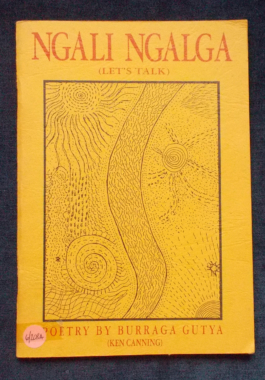
 The author of these beautiful indigenous poems is also known as Ken Canning. Powerful titles, including: Fair Skin - Black Soul; Man Of Peace; Mind Installation; Spiritless Man; Temporary Town and more. Burraga Gutya (Ken Canning) is a Murri activist, writer and poet, whose people are from the Kunja Clan of the Bidjara Nation in south west Queensland, Australia. Canning now lives and teaches in Sydney. Ken works with the Rainbow Lodge program where he supports Aboriginal men leaving custody. He first started writing poetry in Boggo Road Gaol, Brisbane in the early 1970s. Writing led him to tertiary studies at the University of Technology, Sydney, where he completed his BA in Communications in 1987.
The author of these beautiful indigenous poems is also known as Ken Canning. Powerful titles, including: Fair Skin - Black Soul; Man Of Peace; Mind Installation; Spiritless Man; Temporary Town and more. Burraga Gutya (Ken Canning) is a Murri activist, writer and poet, whose people are from the Kunja Clan of the Bidjara Nation in south west Queensland, Australia. Canning now lives and teaches in Sydney. Ken works with the Rainbow Lodge program where he supports Aboriginal men leaving custody. He first started writing poetry in Boggo Road Gaol, Brisbane in the early 1970s. Writing led him to tertiary studies at the University of Technology, Sydney, where he completed his BA in Communications in 1987. -


In 1999, General Peter Cosgrove was thrust into the full glare of the nation's spotlight following his appointment as Commander of the International Forces in East Timor. (INTERFET) Always in his slouch hat, he was a reassuring figure and we watched with pride the professionalism and concern of our peacekeeping forces who under his direction helped lay the foundations of a new nation. In his subsequent rise to Chief of Army and then, in July 2002, to Chief of the Defence force, the General cemented his reputation as a modern-day warrior chieftain as he displayed those characteristics we value most as Australians - strength, determination, intelligence, compassion and humour.


